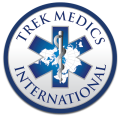AT-A-GLANCE
DIAL 119 TO CALL AN AMBULANCE IN JAPAN
- Prehospital emergency care and transports by ambulance in Japan are a government-sponsored service run through the Fire and Disaster Management Agency
- The Japanese system is considered “well organized and very effective in rapidly deploying emergency response vehicles … despite heavy automobile traffic and pedestrian congestion” (O’Malley, 443)
- One of the major concerns for Japanese EMS is the high occurrence of non-critical patients; 92% of patients transported by ambulance in Tokyo were found to have mild or moderate conditions, leading to increased response times (Abe, 2013)
If you need an ambulance, show the sentence below to a Japanese person and they will call one for you.
HOW CAN I CALL AN AMBULANCE IN JAPAN?
IN CASE OF EMERGENCY, DIAL 119
- Calling 119 will connect you to a fire department call center that will dispatch the nearest available ambulance and other emergency responders as necessary
Yes, calling 119 is possible nationwide.
- Dial #7119 in Tokyo to speak with the Emergency Telephone Consultation Centre if your medical concern is borderline — i.e., not serious enough to call an ambulance, but concerning enough to require consultation without going to the hospital. #7119 “is a 24-h and 7-day a week nurse-run telephone advice line, which aims either to refer callers to the most appropriate services, or to provide them with advice on how to care for their condition.” (Morimura, 2011)
- Dial 03-5285-8185 for Emergency interpretation in English
During disasters and other complex emergencies, you can call 171, run by NTT West and the National Disaster Information System which is operated by the national government to provide/exchange info about impact/damage of the disaster and available hospital resources.
- Scoop-and-run/defibrillate
- Limited, national protocols
- Limited scope: no medication administration (oxygen only)
- Has been reported that “Japanese [pre-hospital providers] and the Japanese public feel the pre-hospital scope of practice is severely limited compared with their counterparts in North America and other countries in the western hemisphere” (Lewin, 237)
EMERGENCY MEDICAL TRAINING LEVELS IN JAPAN
- Emergency Life-Saving Technician – 1991
- 2003 – AED w/o on-line medical control
- 2003 – Orotracheal intubation also included
- After 262h of Additional National Standard Training Course
- Minimum 30 successful clinical intubations
- 2006 – Epinephrine administration
- After 220h of Additional National Standard Training Course
- No formal re-certification, though they must undergo 128h of clinical training every 2 years
- Encouraged to participate in CEUs
- “As recently as 1990, ambulances were not equipped and paramedics not trained to assist women in labor and had been known to refuse to transport them” (O’Malley, 443)
- Doctor Cars
- Modified ambulance with advanced mobile intensive care capabilities, designed to improve out-of-hospital cardiac arrest
- Staffed by Certified Emergency Specialists, young physicians training to become CES, RNs with critical care experiences, “and sometimes by paramedics” (O’Malley, 443)
- “Physicians who staff the doctor cars perform a wide and inconsistent variety of aggressive interventions at the scene of emergency situations” (O’Malley, 444)
- “All ambulance crews are required to be trained in firefighting techniques and ambulance vehicle operations “
Emergency response and transport is provided by conventional ambulance in Japan. Sometimes the fire brigade will assist ambulance personnel; doctors may also be dispatched in regular vehicles to arrive more quickly and begin providing care while waiting for the ambulance to arrive.
Regarding the distribution of ambulances in Japan:
- Regions with a population of <150,000 are provided one ambulance per 50,000 people
- Regions with a population of >150,000 are provided three ambulances plus one additional ambulance for every 70,000 people
Hospital are categorized in Japan to enable “EMS personnel to rapidly transport patients to appropriate medical facilities. … classified into three levels based on resources, administration, staff and education.” (Tanigawa, 368-9)
- Primary Emergency Facilities
- Walk-in patients
- Secondary Emergency Facilities
- Acute illnesses and trauma
- Tertiary Emergency Facilities (“Life-Saving Emergency Centers”)
- Total care for critically and severely ill/traumatized
- Responsible for medical personnel education, including ambulance personnel
- “Advanced Life-Saving Emergency Centers” can treat severe burns, acute intoxication and reconstruction surgery for amputations
Emergency medical response and transport by ambulance in Japan is funded entirely by the public; patients do not pay out of pocket for transportation. However, in 2015, the Japanese government began to re-examine this policy: “Citing the Fire and Disaster Management Agency, it said that about half of patients being transported in emergency vehicles don’t have serious illnesses in need of hospitalization and that only 9% of patients had conditions considered life-threatening.” [Source: Wall Street Journal] It is unclear if these changes were made official or not.
ADDITIONAL INFO
Common Emergencies in Japan
- Typhoons
- Earthquakes
- Tsunamis
- Drownings
Vaccinations for Japan
According to the US Centers for Disease Control and Prevention (CDC), different groups of travelers will require different vaccinations for travel in the Bahamas:
- All Travelers:
- Measles-mumps-rubella (MMR) vaccine
- Diphtheria-tetanus-pertussis vaccine
- Varicella (chickenpox) vaccine
- Polio vaccine
- Your yearly flu shot
- Some Travelers:
- Hepatitis A
- Hepatitis B
- Japanese Encephalitis – “You may need this vaccine if your trip will last more than a month, depending on where you are going in Japan and what time of year you are traveling. You should also consider this vaccine if you plan to visit rural areas in Japan or will be spending a lot of time outdoors, even for trips shorter than a month.” (Read more)
- Rabies
Read more about travel in Japan at the CDC website: https://wwwnc.cdc.gov/travel/destinations/traveler/none/japan (Last accessed: Aug. 7, 2017)
The first emergency medical services in Japan were started by Tokyo police department before World War II to serve trauma patients
1933 – Original development of in Yokohama through local FD
- 1935 – 6 ambulances in old Tokyo City
1947 – Constitution of Japan established “Local Autonomy Law”, enabling local governments to provide prehospital transport services
- The services remained dependent on support from local municipalities
- By 1991, 99.3% of population had access to prehospital services (Tanigawa, 366)
1961 – The first 24-hour emergency service-designated hospitals were designated
Increased EMS services caused by two factors:
- Increased economic viability resulted in increased car ownership (and increased vehicle collisions)
- 1964 Olympics
“In preparation for the Tokyo Olympics in 1964 and as a result of public pressure for improved access to care, legislation was passed in 1963 to require every prefecture to establish a system of ambulance transport connected to a centralized emergency phone operator” (O’Malley, 441)
- “In 1964, the central government authorized prefectures to monetarily reward hospitals for remaining open at night” (O’Malley, 441)
1973 – Japan Association of Acute Medicine (JAAM) founded, involvement predominantly by surgeons
1977 – Ministry of Health and Welfare successfully lobbied “to allocate an annual budge for the development of a comprehensive, organized emergency care system known as the Critical Emergency Transfer System” (O’Malley, 442)
1991 – JAAM members and others enacted Emergency Life Saving Technicians (ELST)
- Introduction of publicly- and privately-funded Foundation for Ambulance Development
Two recent events leading to review of Japanese EMS by public (Lewin, 238)
- Akita City
- Pre-hospital providers were practicing ET intubation “for several years” without permission
- Providers were indicted, but were regarded by public as “heroes, stirring debate about their professional fates and the ‘backwardness of Japanese EMS’”
- Nov. 2002 – “tragic, sudden death of Prince Takamadonomiya at the Canadian embassy in Tokyo”
- Defibrillation was performed only with consent of base hospital physician, which took too long
- Led to “public outcry to expand the scope of practice in Japanese EMS from its basic life-support-based system”
2001 – Japan launched helicopter emergency medical service (HEMS)
Japan’s Ministry of Health and Welfare oversees and regulates emergency medical and ambulance services.
- Abe T et al: “Association between helicopter with physician versus ground emergency medical services and survival of adults with major trauma in Japan.” Critical Care. 2014 Jul 9;18(4):R146. doi: 10.1186/cc13981.
- Abe T et al: “Descriptive analysis of patients’ EMS use related to severity in Tokyo: a population-based observational study.” PLoS One. 2013;8(3):e59738.
- Hagihara A et al: “The aging population and future demand for emergency ambulances in Japan.” Internal and Emergency Medicine. 2013;8(5):431-7.
- Hori S: “Emergency medicine in Japan.” Keio Journal of Medicine 2010;59(4):131-9.
- Koike S et al: “Collapse-to-emergency medical service cardiopulmonary resuscitation interval and outcomes of out-of-hospital cardiopulmonary arrest: a nationwide observational study.” Critical Care. 2011;15(3):R120.
- Lewin MR, Hori S, Aikawa N: “Emergency medical services in Japan: an opportunity for the rational development of pre-hospital care and research.” The Journal of Emergency Medicine 2005;28(2):237-41.
- Morimura N et al: “The impact of an emergency telephone consultation service on the use of ambulances in Tokyo.” Emergency Medicine Journal. 2011;28(1):64-70.
- O’Malley RN, O’Malley GF, Ochi G: “Emergency medicine in Japan.” Annals of Emergency Medicine 2001;38:441-6.
- Tanigawa K, Tanaka K: “Emergency medical services systems in Japan: past, present, and future.” Resuscitation 2006;69:365-70.
Fire and Disaster Management Agency, Japan. “Chapter Two: Rescue operations, first aid.” Available in English at: https://www.fdma.go.jp/en/pdf/top/en_03.pdf
SCOREBOARD
% of Seriously Injured Transported by Ambulance in Japan, 2013
[Source: 2013 Global Status Report on Road Safety, WHO]
ROAD TRAFFIC INJURY DEATHS
(PER 100,000 POPULATION)
[Source: 2015 Global Status Report on Road Safety, WHO]
REPORTED HOMICIDES
(PER 100,000 POPULATION)
[Source: 2014 Global Status Report on Violence Prevention, WHO-UNDP]




